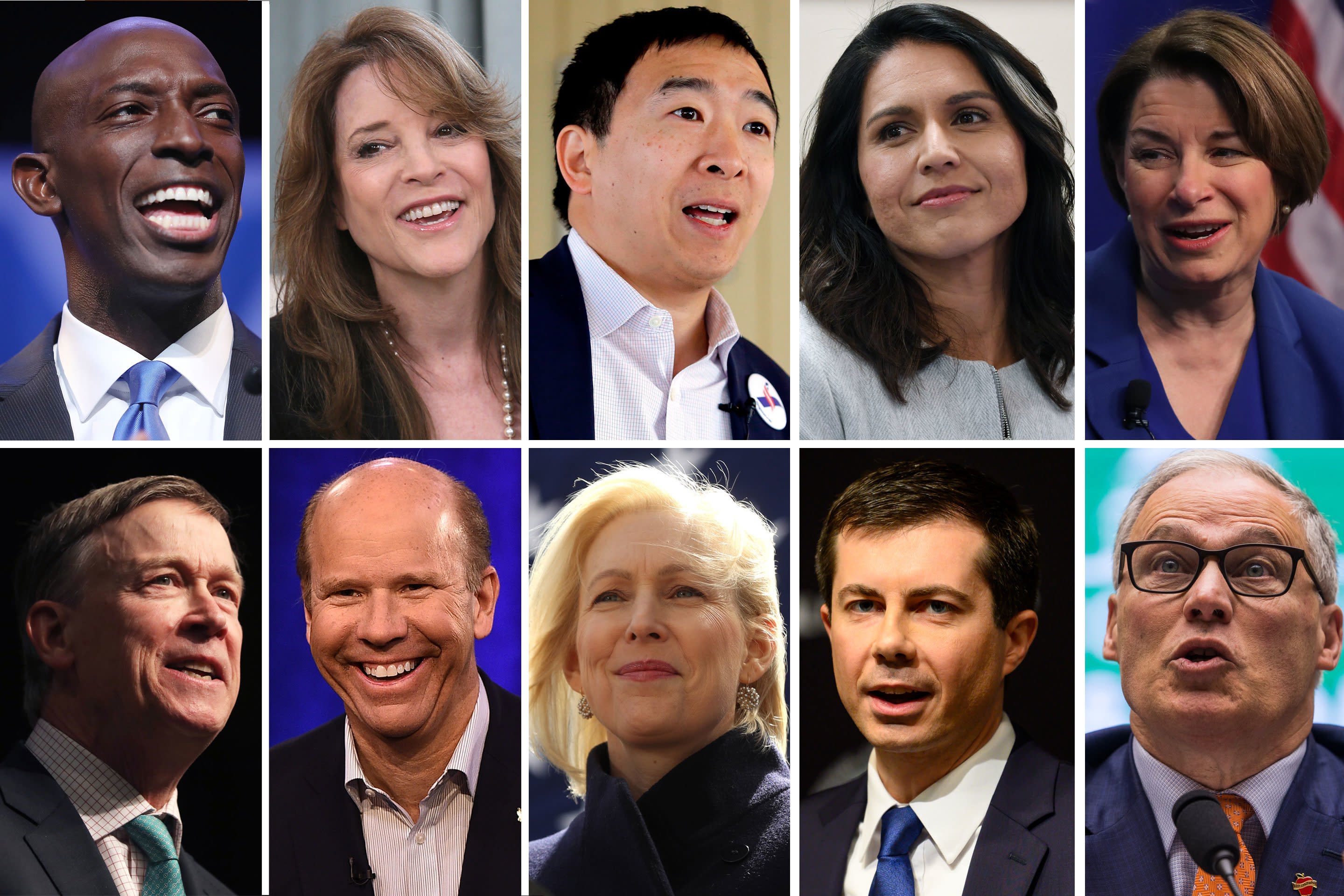Key Players and Their Platforms: Democratic Primary

The 2024 Democratic presidential primary is shaping up to be a competitive race, with a diverse field of candidates vying for the nomination. The candidates come from a variety of backgrounds and have different political experiences, policy positions, and campaign strategies.
Some of the key players in the race include:
* Joe Biden: The incumbent president, Biden is seeking a second term. He is a moderate Democrat who has campaigned on his experience and his ability to unite the country.
* Kamala Harris: The vice president, Harris is a progressive Democrat who has campaigned on her commitment to social justice and her experience in law enforcement.
* Pete Buttigieg: The former mayor of South Bend, Indiana, Buttigieg is a moderate Democrat who has campaigned on his youth and his ability to appeal to a broad range of voters.
* Elizabeth Warren: The senior senator from Massachusetts, Warren is a progressive Democrat who has campaigned on her plans to address economic inequality and corruption.
* Bernie Sanders: The senior senator from Vermont, Sanders is a self-described democratic socialist who has campaigned on his plans to create a more equitable society.
These are just a few of the key players in the Democratic primary. The race is still fluid, and it is unclear who will ultimately win the nomination. However, the candidates’ policy positions and campaign strategies will likely play a major role in determining the outcome of the race.
Primary Process and Timeline

The Democratic primary process is a series of elections held to determine the party’s nominee for president. The process begins with a series of debates, caucuses, and primaries, where voters cast ballots for their preferred candidate. The candidate who receives the most votes in each state or district wins a certain number of delegates, who will then vote at the Democratic National Convention to select the nominee.
Upcoming Debates, Caucuses, and Primaries
The schedule of upcoming debates, caucuses, and primaries is as follows:
* February 3: Iowa caucuses
* February 11: New Hampshire primary
* February 22: Nevada caucuses
* February 29: South Carolina primary
* March 3: Super Tuesday (14 states and one U.S. territory)
* March 10: Michigan primary
* March 14: Washington primary
* March 17: Idaho primary
* March 24: Alaska caucuses
* March 26: Wyoming caucuses
* April 7: Wisconsin primary
* April 28: Pennsylvania primary
* May 5: Indiana primary
* May 12: Nebraska primary
* May 19: West Virginia primary
* June 2: California primary
* June 9: New Jersey primary
* June 23: New York primary
Superdelegates
Superdelegates are a group of unelected delegates to the Democratic National Convention who are not bound to support any particular candidate. Superdelegates include party leaders, elected officials, and other prominent Democrats. In 2020, there were 771 superdelegates.
The role of superdelegates has been controversial in recent years. Some Democrats argue that superdelegates give too much power to party insiders and that they should be eliminated. Others argue that superdelegates are necessary to ensure that the Democratic nominee is someone who can win the general election.
The impact of superdelegates on the outcome of the Democratic primary is difficult to predict. In 2016, Hillary Clinton won the popular vote but lost the pledged delegate count to Bernie Sanders. However, Clinton won the nomination because she had the support of a majority of superdelegates.
Voter Demographics and Engagement
The Democratic primary electorate is a diverse group, reflecting the party’s broad coalition of voters. Key voting blocs include African Americans, Latinos, Asian Americans and Pacific Islanders, women, young voters, and LGBTQ+ voters. These groups have historically played a significant role in Democratic primaries and are likely to continue to do so in 2024.
Voter Turnout and Engagement, Democratic primary
Voter turnout in Democratic primaries varies widely from state to state, depending on factors such as the competitiveness of the race, the level of interest in the candidates, and the ease of voting. In recent years, there has been a trend towards increased voter turnout in Democratic primaries, particularly among young voters and voters of color. This trend is likely to continue in 2024, as the Democratic Party seeks to mobilize its base and energize its voters.
Amidst the buzz of the Democratic primary, voters in Pennsylvania may also be considering their options for pennsylvania license plate options. From scenic vistas to personalized messages, there’s a wide array to choose from. As the primary heats up, candidates vying for votes will need to balance their campaign strategies with the diverse needs of Pennsylvanians, including their choices for expressing themselves on the road.
The democratic primary is underway, and candidates are vying for votes. Meanwhile, the state of Pennsylvania has unveiled a new pa license plate design. The new design features a blue and white color scheme, with the state seal in the center.
It is a refreshing change from the old design, which had been in use for many years. The new license plate design is a reminder that even in the midst of a heated political campaign, there is always room for progress and innovation.
